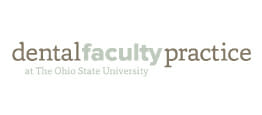Though daily brushing and flossing can prevent a lot of damage and decay, it’s sometimes not enough. The ridges in our teeth hold onto particles of food and bacteria, which can be difficult to reach with a toothbrush. Luckily, having sealants applied to your teeth can help protect them for the long term.
What are sealants?
Dental sealants are protective coverings for the surface of the molars and premolars that are made of thin plastic. The sealant will bond to the surface of the tooth and will sink into the grooves of your molars.
Why should I get sealants?
Our molars do the heavy lifting when it comes to chewing and grinding food, which also means their surfaces are vulnerable to decay. Sealants protect these surfaces by creating a layer of thin plastic in between your teeth and all with which it comes in daily contact. Sealants protect against tooth decay by “sealing out” plaque and food particles from the surfaces of your molars.
How are sealants applied?
Your dentist will begin by thoroughly cleaning and drying your molars, which will prepare them to receive the sealant. Following this, an acidic solution will be applied to the surface of the teeth to roughen them up, which will help create a strong bond between the surface of the tooth and the sealant. The teeth are then cleaned, rinsed, and dried in final preparation for the application of the sealant. The dentist will paint the sealant directly onto your teeth, which will allow it to sink into the grooves of your molars, effectively sealing-off the clean tooth from materials that could cause decay.
When should I get sealants?
To reap the full benefits of sealants, they should be applied to the molars as soon as possible. Therefore, sealants are an important part of pediatric dentistry since childhood is when your teeth are developing. Sealants can be applied to both premolars (“baby teeth”) and molars. Once your child has a full set of premolars, we can apply their sealants and can repeat the process when adult teeth develop. The years between ages 6 and 14 are often cavity-prone years. Getting sealants early can help reduce this decay and protect the teeth long-term.











